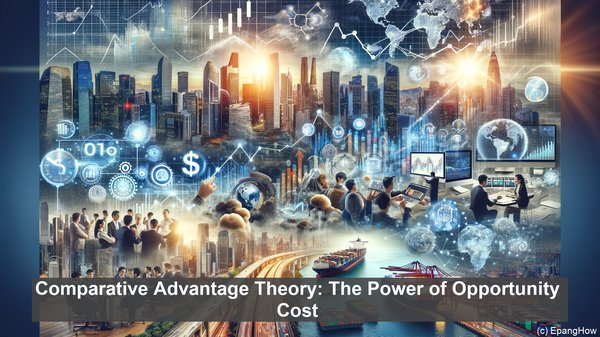Introduction: The Foundation of International Trade
Hello everyone! Welcome to our article on the difference between factor endowment theory and comparative advantage theory. Before we dive into the details, let’s establish a foundation. International trade, the exchange of goods and services between countries, has been a driving force in the global economy. It allows nations to specialize in what they do best and benefit from the production capabilities of others. To understand the dynamics of international trade, economists have developed various theories, two of which we’ll explore today.

Factor Endowment Theory: The Role of Resources
Factor endowment theory, also known as the Heckscher-Ohlin theory, posits that a country’s comparative advantage in producing certain goods is determined by its factor endowments. These endowments include land, labor, capital, and natural resources. The theory suggests that countries will export goods that intensively use their abundant factors and import goods that require resources they lack. For example, a country rich in natural resources might export raw materials while importing manufactured goods.

Comparative Advantage Theory: The Power of Opportunity Cost
Comparative advantage theory, pioneered by David Ricardo, takes a different approach. It argues that a country should specialize in producing goods in which it has a lower opportunity cost compared to other nations. Opportunity cost refers to the value of the next best alternative foregone when making a choice. By specializing, a country can maximize its production efficiency and overall output, leading to gains from trade. This theory emphasizes the importance of relative, rather than absolute, productivity.
Distinguishing Factors: Key Differences
While both theories revolve around the concept of specialization, there are some fundamental differences. Factor endowment theory focuses on the role of resources, suggesting that a country’s factor abundance determines its trade patterns. Comparative advantage theory, on the other hand, emphasizes the concept of opportunity cost and relative productivity. Another distinction lies in the determinants of comparative advantage. Factor endowment theory attributes it to differences in resource availability, while comparative advantage theory highlights differences in technology and efficiency.
Real-World Applications: Relevance Today
These theories have significant implications for international trade policies. For instance, factor endowment theory suggests that countries should protect industries that use their abundant resources, while comparative advantage theory advocates for free trade and specialization. In reality, trade policies often involve a combination of these approaches, with countries considering their unique circumstances. Understanding these theories helps policymakers make informed decisions and promotes efficient global trade.
